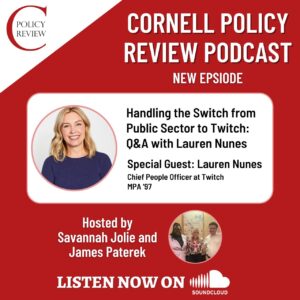Written By Joe VerValin
Edited By Kathleen Egan
The Republican Party’s unified control of the federal government has brought block grants back into fashion. For instance, recent attempts to repeal and replace the Affordable Care Act have included block-granting Medicaid to the states as part of the Republican vision for healthcare reform as an alternative option.[1] Speaker of the House Paul Ryan has long favored utilizing block grants, recommending the consolidation of eleven antipoverty programs into a block grant to states in 2014.[2] Other conservative lawmakers, such as Senator Ted Cruz of Texas, have proposed block granting education funding for both policy and political purposes.[3]
Despite their incredible levels of popularity among one of America’s two major political parties, the nature of block grants remains largely misunderstood. Block grants are essentially large sums of money granted by the national government to regional governments with only general provisions as to how that money should be spent. This stands in contrast to categorical grants which have stricter and more specific rules on how regional governments are allowed to spend money. For the past several decades, federal policymakers in the United States have increasingly utilized block grants as a way to distribute funds for social programs to the states. During the time of the New Deal and the Great Society, Congress would transfer tens of billions of dollars to state governments through categorical grants and formulas that were targeted for specific purposes. By the 1970s and 1980s, the popularity of these categorical grants began to wane as policymakers increasingly bundled funds into broader spending categories under the rubric of block grants.[4]
Block grants were initially intended to serve two purposes – to give states the authority and flexibility needed to accommodate the needs of their constituencies and to encourage states to curtail spending. In practice, the latter of the two purposes has been emphasized far more by policymakers in both Congress and the executive branch, who have viewed block grants as a way to save money by shifting the costs of various social programs to state and local governments.
Today, block grants cover a wide variety of functions, including home investment partnerships, cash assistance for low-income families, job training, substance abuse prevention, and community development. While block grant advocates would argue that programs have become more efficient and have mechanisms in place that allow for funding increases when needed, recent analysis has shown that these mechanisms have failed to work in practice. Many block grant programs meant to serve the most vulnerable people in the United States have atrophied in funding at both the federal and state level, remaining unresponsive despite major demographic and economic changes in the country over the past few decades. While this extensive use of block grants in policymaking has been a great financial boon for federal policymakers attempting to rein in spending and state policymakers looking to fund pet projects, they have had major financial downsides for the states and hundreds of millions of Americans that depend on federal assistance.
The Decline of Block Grant Funding Over Time
According to a 2017 analysis by the Center on Budget and Policy Priorities (CBPP), federal funding for 13 major block grant programs for housing, health, and social services has dropped by 27 percent or $14 billion since 2000, dropping to 37 percent when adjusting for inflation and population growth.[5] Observing funding over time for thirteen social programs that were block granted in the 1980s and 1990s, the think tank found that ten of them had shrunk in inflation-adjusted terms. Four of them (the HOME Investment Partnerships Program, Community Development Block Grant, Job Training Formula Grants to States, and the Social Services Block Grant) were found to have shrunk by more than half. All but one of the block grants examined in the study, the Child Care and Development Fund, have shrunk after adjusting for both inflation and population growth, and even the Child Care and Development Fund has shrunk from its peak levels of funding in 2002.[6] Overall, combined block grant funding in 2017 is more than $20 billion below the 2000 funding level.
Moreover, the funding for these block grants has not kept pace with the growth of the United States economy over the past several decades, nor has it kept pace with the nation’s growth in population. While the overall U.S. population has grown by 16 percent since 2000, funding for block grants has fallen by 37 percent when both population growth and inflation are considered.[7] Whereas total block-grant funding equaled 0.36 percent of the economy in 2000, this share of GDP had dropped by more than two-fifths to approximately 0.20 percent by 2017.[8] These numbers strongly suggest that even if policymakers devise a block grant that initially mimics previous funding models for programs they intend to continue financing, that initial level will likely be unsustainable. The inherent lack of sustainability here is intrinsic to a foundational notion of block grants: the idea that state governments should be given broad levels of flexibility over implementation. This flexibility diffuses the ways in which states respond to the challenges that the block grant is attempting to solve, which in turn makes the impact of these programs difficult to evaluate. What coalesces is a negative feedback loop: lax standards of state reporting lead to diffuse responses hampering the ability of commonly used models of policy analysis to assess a program’s impact effectively. With national policymakers lacking compelling evidence of their effectiveness, block grant programs are more likely to be cut in subsequent years or have their levels erode over time. In the meantime, states use the flexibility they receive under the block-grant structure to substitute some federal block grant dollars for state dollars they previously spent in other policy areas, such as tax breaks. States subsequently use these freed-up state dollars for unrelated purposes or to plug state budget holes. Overall, this causes the total pool of federal and state services using block grants to shrink significantly.
Temporary Assistance for Needy Families (TANF): A Case Study in Program Atrophy
One of the largest and most well-known block grants is the Temporary Assistance for Needy Families (TANF) program. TANF emerged out of the 1996 welfare reform bill that replaced Aid to Families with Dependent Children (AFDC), a former cash entitlement program. TANF shifted the nature of welfare for low-income families in the United States from an entitlement to a block grant meant to encourage work by incorporating mechanisms such as work requirements and time limits that cap the amount of time that an individual can spend enrolled in the program. Under TANF’s vague guidelines, states can exercise their flexibility and spend federal funds on projects only tangentially related to the program goals, further reducing the resources going towards poor families.
Funding for TANF has remained essentially unchanged in nominal terms since 1996, receiving $16.57 billion annually.[9] Based on the Center on Budget and Policy Priorities (CBPP)’s 2017 analysis, this lack of change in funding has resulted in the program losing a third of its value due to inflation and population growth. Combined with other factors, this devaluation has contributed to TANF’s inability to combat poverty as constructively as the AFDC program. Whereas 68 out of 100 AFDC eligible families were receiving cash assistance in 1996, only 23 out of every 100 eligible families received assistance from TANF in 2015. In 14 of these states, out of every 100 eligible families, ten or fewer with children receive cash assistance.[10] In these states, cash welfare, even in its most restrictive form, no longer exists for those who need it.
The decline in families with children being served is reflective of not only the erosion of TANF funding since its creation over two decades ago, but also of how state policymakers have utilized these funds. States have taken advantage of the shift from the flexibility of the block grant to TANF funds for purposes far removed from the traditional idea of welfare. In Oklahoma, TANF funds are used to fund marriage classes with the goal of encouraging the formation and maintenance of two-parent families. Michigan uses $100 million a year of TANF dollars to fund college scholarships for in-state students to attend small private colleges. Indiana has used TANF dollars to fund crisis pregnancy centers designed around convincing pregnant women to refrain from aborting their pregnancies.[11]
State flexibility and lack of federal oversight has had tangible impacts on the distribution of the program’s funds. State utilization of TANF funds for cash assistance programs has dropped significantly from 70 percent at the program’s outset in 1997 to 25 percent by 2015.[12] In the same year, only one-quarter of TANF funds were found to be spent on programs that align with the program’s initial objectives such as job training and child care. In effect, a mere half of TANF funding goes to core welfare reform activities like cash aid, work activities, and child care, with states diverting the remaining funds into a kludge of policies and projects often unrelated to the core mission of the program.
Broader Trends and Social Impact
Similar trends in funding erosion can be observed in other programs that have been awarded block grants. For example, the Community Development Block Grant, a program of the U.S. Department of Housing and Urban Development that funds activities such as affordable housing, anti-poverty programs, and infrastructure development, has fallen by 51 percent since 2000, totaling about $2.99 billion annually. The Substance Abuse Prevention and Treatment Block Grant that assists states in planning, implementing, and evaluating activities that prevent and treat substance abuse totals $1.85 billion, having decreased by 19 percent from $2.2 billion since 2000. Various block grants for low-income housing programs, such as the HOME Investment Partnership Program and the Native American Housing Block Grant, provide yet another example. Since 2000, funding for these programs has fallen by 58 percent and 27 percent, respectively, after adjustment for inflation.[13]
A detailed examination of all of these programs, conducted by the CBPP, shows a clear decline in program funding over the past fifteen years. As reported, overall funding for the block grant programs remained essentially unchanged from 2000 to 2002, despite the recession occurring in 2001, and block grant funding steadily declined through 2008. While total funding for the block grants rose significantly in 2009, this increase was largely the result of funding boosts for several block grants under the 2009 Recovery Act enacted in response to the Great Recession. Since policymakers intended for the funding increases in the Recovery Act to be temporary anti-recessionary measures, these increases did not last, and funding declined rather sharply in 2010, even though the economy continued to struggle and the need for many of these programs remained elevated. By 2011, overall funding for these block grant programs was cut below their pre-recession levels, and they have steadily declined since then.[14]
These clear trends of deterioration in block grant funding over time, regardless of changing economic and demographic circumstances, undermine the idea that when funding levels for these programs prove inadequate, Congress will simply appropriate the necessary funds to resolve the issue. Instead, these programs are given a set amount of funding that is left unaltered unless an extreme emergency arises, and legislators are otherwise unwilling to wage political battles on behalf of these programs. In fact, some policymakers at the federal level have come to see these block granted programs as wasteful spending that needs to be cut, as illustrated by President Donald Trump’s proposed 2018 budget that cuts a significant amount of money from block granted programs.[15]
In effect, this leaves social programs that receive block grants unresponsive to changes in need. In contrast, entitlement programs such as Medicaid (a joint federal-state aid program) and SNAP (a federal aid program) have remained highly responsive, and able to grow immediately and automatically when needs arise. This growth is vital during recessions and other periods of economic strife, as it directly aids persons in need of assistance while moderating the severity and duration of recessions by lessening the drop in consumer purchasing power, thereby helping the overall economy at both a state and national level.[16],[17] If entitlement programs like Medicaid received block grants at the state level, the federal government would set each state’s spending amount in advance and states would lose their ability to respond effectively to both economic downturns and changes within the population.
Moreover, the policy challenges and social issues that these block grants were designed to address have only worsened. Twenty-five percent of children living in the United States live in poverty—the highest child poverty rate in the developed world. The number of Americans living in deep poverty, with an income less than half the poverty line, has also risen substantially since the block granting of anti-poverty programs in the 1980s and 1990s.[18] Housing costs in many areas of the country have risen faster than the general inflation rate leading to a rising rate of homelessness in America, as reported in a number of studies.[19] In the absence of suitable substance abuse programs, opioid addiction has become a major public health crisis, with an estimated 20,000 Americans dying due to an opioid overdose in 2016 alone.[20] These are serious issues that require flexible and rapid responses that block grant programs are incapable of providing.
As policymakers consider new ways to reinvent block grants in the future, it is important that they examine the fate of programs that received block grants in the past. Despite claims that merging programs into broad block grants will improve results for the families the programs serve while also reducing spending, only the latter has been true in practice. The evidence points to the likelihood that the continual block granting of programs will lead to a substantial erosion of their funding over time. Though this will save the government money, social ills will be left unaddressed, and public suffering will persist.
References
- Luthra, Shefali, and Kaiser Health News. “Everything You Need To Know About Block Grants – The Heart Of GOP’s Medicaid Plans.” Kaiser Health News. May 24, 2017. Accessed March 20, 2018. https://khn.org/news/block-grants-medicaid-faq/. ↑
- “Ryan and Block-Granting the Safety Net.” Center on Budget and Policy Priorities. October 11, 2017. Accessed March 20, 2018. https://www.cbpp.org/blog/ryan-and-block-granting-the-safety-net. ↑
- “Block grants are just budget cuts in disguise – and the targets are antipoverty programs.” Los Angeles Times. March 25, 2016. Accessed March 20, 2018. http://www.latimes.com/business/hiltzik/la-fi-hiltzik-block-grants-20160325-snap-htmlstory.html. ↑
- “Federal Block Grants Have Been a Big Financial Loser for the States.” The Fiscal Times. Accessed March 20, 2018. http://www.thefiscaltimes.com/2017/02/23/Federal-Block-Grants-Have-Been-Big-Financial-Loser-States. ↑
- “Block-Granting Low-Income Programs Leads to Large Funding Declines Over Time, History Shows.” Center on Budget and Policy Priorities. October 10, 2017. Accessed March 14, 2018. https://www.cbpp.org/research/federal-budget/block-granting-low-income-programs-leads-to-large-funding-declines-over-time. ↑
- Ibid. ↑
- Ibid. ↑
- Ibid. ↑
- “Block-Granting Low-Income Programs Leads to Large Funding Declines Over Time, History Shows.” Center on Budget and Policy Priorities. October 10, 2017. Accessed March 14, 2018. https://www.cbpp.org/research/federal-budget/block-granting-low-income-programs-leads-to-large-funding-declines-over-time. ↑
- Ibid. ↑
- Uncertain Hour, NPR, Episodes 3-5, 2016-7 ↑
- Ibid. ↑
- Ibid. ↑
- CBPP, 2017 ↑
- “Trump Budget’s Deep Cuts to Block Grants Underscore Danger of Block-Granting.” Center on Budget and Policy Priorities. October 11, 2017. Accessed March 20, 2018. https://www.cbpp.org/research/federal-budget/trump-budgets-deep-cuts-to-block-grants-underscore-danger-of-block-granting. ↑
- Haskins, Ron. “Reflecting on SNAP: Purposes, Spending, and Potential Savings.” Brookings. May 10, 2017. Accessed March 20, 2018. https://www.brookings.edu/testimonies/reflecting-on-snap-purposes-spending-and-potential-savings/. ↑
- Snyder, Laura, and Robin Rudowitz. “Medicaid Financing: How Does it Work and What are the Implications?” The Henry J. Kaiser Family Foundation. December 21, 2016. Accessed March 20, 2018. https://www.kff.org/medicaid/issue-brief/medicaid-financing-how-does-it-work-and-what-are-the-implications/. ↑
- Shaefer, H. Luke , and Kathryn Edin. “The Rise of Extreme Poverty in the United State.” Stanford Center on Poverty and Inequality. Accessed Summer 2014. https://inequality.stanford.edu/sites/default/files/media/_media/pdf/pathways/summer_2014/Pathways_Summer_2014_ShaeferEdin.pdf. ↑
- “The 2017 Annual Homeless Assessment Report (AHAR) to Congress.” Hudexchange.info. December 2017. https://www.hudexchange.info/resources/documents/2017-AHAR-Part-1.pdf. ↑
- National Institute on Drug Abuse. “Overdose Death Rates.” NIDA. September 15, 2017. Accessed March 20, 2018. https://www.drugabuse.gov/related-topics/trends-statistics/overdose-death-rates. ↑





